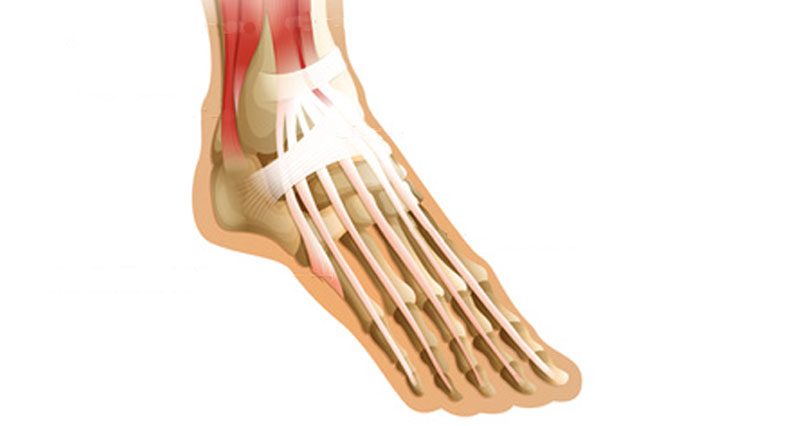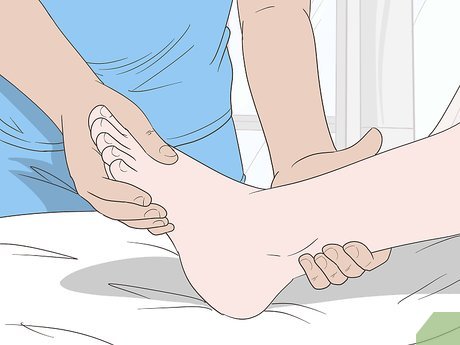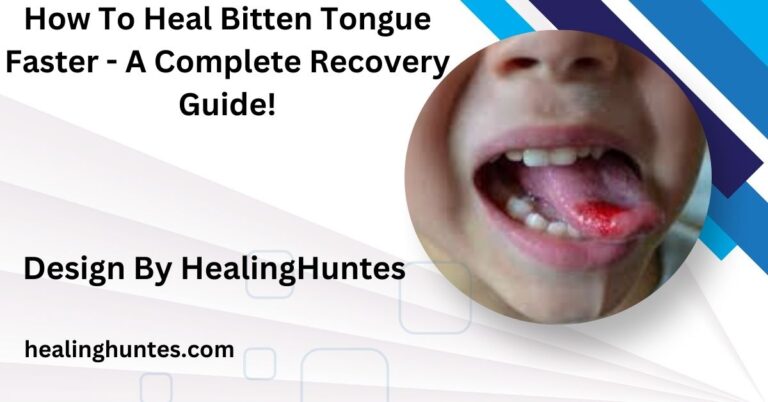Can An Extensor Hallucis Tendon Injury Be Healed Without Surgery – Best Treatments for Extensor Hallucis Without Surgery!
An extensor hallucis tendon injury can often heal without surgery with treatments like rest, physical therapy, and supportive footwear. Consulting a doctor helps determine the best approach.
In this article, we’ll dive into the causes and symptoms of extensor hallucis tendon injuries, explore conservative treatment options, and discuss how you can make an informed decision about whether non-surgical treatment might work for you.
Understanding the Extensor Hallucis Tendon and Its Role:

The extensor hallucis tendon connects to the extensor hallucis longus (EHL) muscle, which runs along the front of the lower leg and attaches to the big toe. This muscle and tendon together control the upward movement (extension) of the big toe, which is essential for balance and efficient walking.
Injuries to the extensor hallucis tendon can result from overuse, trauma, or other foot deformities, making even simple daily activities challenging.
Common Causes of Extensor Hallucis Tendon Injuries:
- Overuse: Repetitive activities, like running or dancing, put stress on the tendons of the foot, including the extensor hallucis tendon. Over time, microtrauma can lead to inflammation, strain, or even partial tearing.
- Trauma: Direct impact injuries, such as stubbing the big toe or experiencing a sudden force against the foot, can damage the extensor hallucis tendon.
- Improper Footwear: Wearing shoes that do not provide adequate support can cause the foot’s tendons to overwork, increasing the risk of injury.
- Foot Deformities: Conditions like flat feet or high arches may alter the way weight is distributed across the foot, putting extra strain on tendons, including the extensor hallucis tendon.
- Other Conditions: Systemic conditions like rheumatoid arthritis or diabetes can weaken tendons over time, making them more susceptible to injury.
Symptoms of an Extensor Hallucis Tendon Injury:
An injury to the extensor hallucis tendon often manifests as:
- Pain along the top of the foot and into the big toe, especially when moving the toe upward
- Swelling or inflammation in the affected area
- Limited range of motion in the big toe
- Weakness or an inability to lift the big toe
- Difficulty walking or pushing off with the toes
Early diagnosis and prompt treatment are critical to prevent worsening symptoms.
Also Read: How I Healed My Trigger Finger Naturally – A Comprehensive Guide!
Non-Surgical Treatment Options for Extensor Hallucis Tendon Injuries:
In many cases, an extensor hallucis tendon injury can be effectively managed without surgery. Here’s a look at the primary non-surgical treatments:
Rest and Activity Modification:
One of the most critical components of healing without surgery is rest. Limiting activities that put stress on the injured tendon, such as running, jumping, or even prolonged walking, gives the tendon time to repair itself.
For athletes or those with active lifestyles, taking a break from high-impact activities and modifying your routine to include low-impact exercises, such as swimming or cycling, can prevent further strain.
Ice and Elevation:

Applying ice packs to the affected area can reduce inflammation and numb pain. Ice should be applied for 15-20 minutes at a time, several times a day. Elevating the foot while resting can also help reduce swelling by encouraging blood flow back toward the heart.
Nonsteroidal Anti-Inflammatory Drugs: (NSAIDs)
NSAIDs, such as ibuprofen, can be effective in managing pain and reducing inflammation. However, they should be used under the guidance of a healthcare provider, as prolonged use can lead to side effects like stomach irritation.
Physical Therapy:
Working with a physical therapist is often beneficial for tendon injuries. A therapist can guide you through specific stretches and strengthening exercises for the muscles around the extensor hallucis tendon, promoting healing and preventing future injuries.
Some common exercises include:
- Toe Extensions: Lifting the big toe while keeping the other toes down, which strengthens the EHL muscle.
- Towel Stretch: Using a towel to gently pull the big toe upward, which stretches the tendon.
- Calf Stretches: Tight calves can increase stress on the extensor tendons, so calf stretches are helpful.
Physical therapy sessions may also include modalities like ultrasound therapy, which uses sound waves to increase blood flow and reduce inflammation in the tendon.
Also Read: Will My Foot Heal Completely After Plantar Wart Removal – Tips for a Speedy Recovery!
Bracing or Taping:
Using a splint or tape to immobilize the toe can prevent further strain on the tendon while it heals. A brace or tape around the big toe limits its motion and provides support, reducing the risk of re-injury during recovery.
Orthotics and Proper Footwear:
Wearing supportive shoes and using custom orthotics can help distribute weight more evenly across the foot, reducing strain on the extensor hallucis tendon. Custom orthotics can be particularly helpful for individuals with flat feet or high arches, as they correct the foot’s alignment, which may contribute to tendon overuse.
When Surgery May Be Necessary?

While conservative treatments are often effective for mild to moderate extensor hallucis tendon injuries, some cases may require surgery. Surgery is generally recommended if:
- There is a complete tear in the tendon that prevents the big toe from extending upward.
- Non-surgical treatments have been ineffective after 6–12 weeks.
- Chronic tendonitis has led to degeneration of the tendon tissue.
In surgical repair, the torn tendon is sutured back together, or in some cases, the surgeon may remove damaged tissue to facilitate healing. Rehabilitation following surgery includes rest, physical therapy, and a gradual return to regular activities.
Tips for Preventing Extensor Hallucis Tendon Injuries:
To minimize the risk of re-injury or avoid an extensor hallucis tendon injury altogether, consider these prevention strategies:
- Warm-Up Properly: Always warm up with dynamic stretches and low-impact movements before high-impact activities.
- Wear Proper Footwear: Choose supportive, well-fitting shoes that cushion the foot and reduce stress on the tendons.
- Strengthen the Muscles Around the Tendons: Regular strengthening exercises for the calf, ankle, and foot muscles can help maintain tendon health.
- Practice Good Form in Sports: Ensuring correct posture and form during exercise and sports activities can reduce undue strain on the foot’s tendons.
FAQ’s
1. Can an extensor hallucis tendon injury heal without surgery?
Yes, most injuries can heal with non-surgical treatments like rest, physical therapy, and supportive footwear.
2. What causes an extensor hallucis tendon injury?
Common causes include overuse, trauma, improper footwear, and foot deformities like flat feet or high arches.
3. What are the symptoms of an extensor hallucis tendon injury?
Symptoms often include pain on top of the foot, swelling, limited big toe movement, and difficulty walking.
4. What non-surgical treatments are recommended?
Rest, ice, NSAIDs, physical therapy, bracing, and orthotics can help manage the injury without surgery.
5. When might surgery be necessary?
Surgery is considered for severe cases, like a complete tear or if non-surgical options don’t work after several weeks.
Conclusion
Yes, an extensor hallucis tendon injury can often heal without surgery, especially if mild. Rest, physical therapy, and supportive footwear can lead to significant improvement. Consulting a healthcare provider is essential to assess severity and create a personalized treatment plan. Early, effective management can restore function, relieve pain, and help you recover fully.






